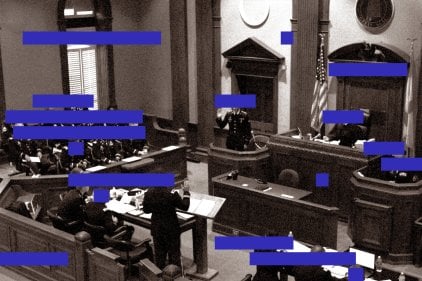I’ve covered the military for more than a decade, and in that time I’ve been aboard many U.S. Navy ships. Although I never really, ahem, got my sea legs, I did gain a fairly good understanding of the service. Still, the military is a beast and there is always a new acronym to learn, technical details to be confused by and complicated dynamics to grasp.
So the day I got the assignment to investigate the collisions of the USS Fitzgerald and USS John S. McCain, I was grateful I had serendipitous visitors. My aunt and uncle were in town, and in addition to being two of my favorite people, they also happen to be retired Navy officers.
Needless to say, they were intrigued by the story. And as I dove into the thousands of documents we had about the collisions, I knew right away their expertise would be a godsend. Both ended up spending hours with me at my kitchen counter that week hunched over a pad, sketching out answers to my myriad questions.
The first big one for me was how and where the ships moved the night of the crashes. I couldn’t quite picture it. My uncle, a surface warfare officer, or SWO, had navigated those same waters and had eagerly dissected the public reports on the collisions. He grabbed a pen and began to draw it out as he broke it down step by step.
Now my uncle, I’m sure he won’t mind me saying, is a salty curmudgeon of a veteran unwilling to suffer fools. So as he took me through the crashes, sometimes with the aid of salt and pepper shakers, there was plenty of dumbfounded scoffing at how sailors could possibly have let them happen. His diagrams that day were the foundation of my understanding of not just what the crashes looked like but also how incomprehensible the errors were to experienced ship drivers. Later, when we interviewed Cmdr. Sean Babbitt, the executive officer of the Fitzgerald, it made perfect sense when he described a young officer’s decision to turn the ship left that night as a failure of SWO 101.
My aunt, a retired captain who’d been a chief engineer on a carrier and has “BIC,” the Navy acronym for “bitch in charge,” tattooed on her bicep, drew out over several sheets of paper the Navy’s byzantine hierarchy and how it had morphed over the years. That would be an ongoing conversation throughout our reporting. Just who reported to whom? We found that sometimes even the Navy didn’t know.

As the writing progressed, they also provided a close read to be sure we weren’t screwing up on the finer details. I knew that what civilians might consider trivial could actually be a big deal to service members and veterans. Many times, I’ve proven my bona fides with a reluctant military source by knowing the subtleties of the vernacular and the culture: like aboard the USS Harpers Ferry when I jokingly gave a sailor a hard time for calling a Marine chief warrant officer “chief” — acceptable shorthand for a chief petty officer in the Navy but never for a Marine. After that, the Marine, who had wanted little to do with me before, was willing to be interviewed.
We knew that getting something like that wrong could have an outsized impact on how trustworthy our investigation was perceived to be. We were appreciative then when my uncle saved us from calling a gun a “cannon” — an archaic term that would have made us look silly. And we thought when people told us about “SWOS in a box” they were referring to the plural of surface warfare officers. We had it written as “SWOs.” My aunt let us know the S at the end was actually part of the acronym; it stood for school — what was once an actual institution had largely become, for a time, just a bunch of instructional CDs.
And we were all struck by the stories my uncle told of his own SWO training. He wasn’t allowed to even touch the steering for six months after he qualified in the position. The conning officer on the Fitzgerald had just four weeks at sea before he took over the night of the crash. That put in stark perspective just how much things had changed.
After the articles came out, my uncle texted me that he could hear the groaning in the Pentagon’s E-Ring all the way in San Diego.
We’ve gotten similar feedback from other service members, both active and retired.















